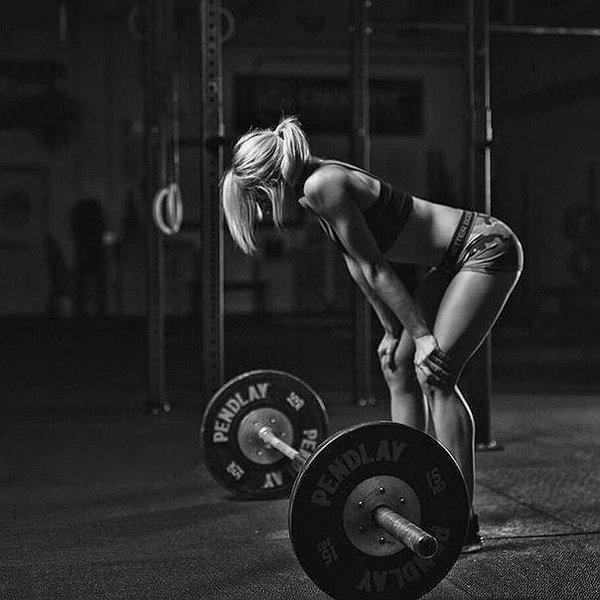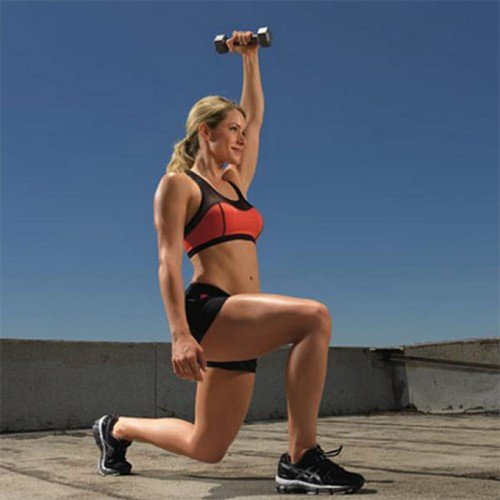Legend has it that some 2,500 years ago, Greek wrestling champion Milo of Croton lifted a calf and carried it every day from the time it was born to the time it became a bull.
While carrying a growing calf may not be the best way for you to gain strength, the science of strength training assures you won't have to. Milo grew stronger with consistency and incorporating progressive overload, both of which are essential for making gains. The fact is, you'll make better, faster gains in strength when you correctly dial in all the training variables.
Which factors are most often messed up? Here's my top six mistakes when training for strength.
Mistake 1: Allowing Assistance Exercises to Become the Focus of Your Workout
One mistake I made early in my powerlifter career was majoring in the minors. I used to set ridiculous goals on skullcrushers, because I knew strong triceps were important for a huge bench. But there became a point at which my focus was no longer to build my bench press, but actually to get better at skulls. This was a very slippery slope I didn't notice until after I injured my elbow.
Assistance, supplementary, or auxiliary exercises—call them what you want—all mean the same thing: These exercises are intended to assist the core lift. Of course, you want to become stronger in assisting exercises to keep structurally balanced, keep the core lift progressing, and prevent injuries. But they're a means to an end. The main lift is the end.
When training for strength, always perform assistance exercises with perfect technique. For single-joint-movement focus, keep your mind intently on the muscle you're working—not just moving the weight from point A to point B. Always perform assisting exercises after the main core lift.
Mistake 2: Focusing on Muscle Over Movement During Big Multijoint Lifts
Focusing on individual muscle contractions is great for single-joint movements or when you're not going heavy. But that changes in a big way when you move over to multijoint ones, especially when combined with heavy weights. If you try to purposefully contract individual muscles while performing a heavy deadlift or squat, you'll never be able to move a respectable amount of pig iron.
When it comes to multijoint lifts anywhere close to your max weight, your objective is to move the weight from point A to point B as forcefully as possible while maintaining perfect technique. Leave muscle confusion and "feeling the muscle" to the aesthetics crowd; your mission is simply to accomplish the lift. As you do this you over and over again, you build a "groove." The more ingrained the groove becomes, the more weight you lift.
When you're training deadlifts or any other heavy compound exercise, don't try to feel the movement. Instead, on the concentric rep of heavy multijoint movements, do it as explosively as possible.
Mistake 3: Training in Higher Rep Ranges
You won't get faster for football by endless miles of road work prepping for the Boston Marathon. Like running, weight-training adaptations are specific. Strength is measured by your one-rep max (1RM) in a core lift. Remember, when you're training to increase your 1RM, you need to train with heavy weight for low reps. Lifting at 60 percent of your max with perfect form for high-rep sets in no way insures your form will remain intact when you're lifting 90-100 percent of your max.
Build up to a point at which you're training with 85-100 percent of your max in the 1- to 4-rep range, and watch your 1RM and repetition maxes increase.
Mistake 4: Following a Warm-Up That's Too Generalized
A couple minutes on the treadmill to bring up body temperature followed by some dynamic stretches is awesome. But this awesomeness, contrary to popular belief, won't get you warmed up for the specific lift you're training.
To squat for strength, the lion's share of your warm-up needs to be squatting. Elite strength athletes have this figured out. Every repetition performed with perfect technique dials in your squat groove and gets you warmed up specifically for the specific movement you're going to train.
If your goal is to reach 315 pounds on the squat, try this for your next warm-up. It probably doesn't look anything like how you'd warm-up when training for bodybuilding:
- 45 x 6 x 3 sets
- 135 x 5 x 2 sets
- 185 x 3 reps
- 225 x 2 reps
- 255 x 1 rep
- 290 x 1 rep
Mistake 5: Not Starting Your workout With the Most Important Exercise
In the movie "Tommy Boy," Chris Farley's father says, "If you want to take a good look at a T-bone steak, you can stick your head up a bull's ass or take the butcher's word." You can take my word, or do a PubMed search. Either way, the truth is that you need to train what is most important first in your training session. So if your goal is to increase your squat, you should squat first in the workout.
Whichever lift is most important to your goals needs to be performed first, because once fatigue sets in, your work capacity and ability to produce force are greatly compromised. Otherwise, you won't be able to get the necessary work done to maximize strength adaptations from your strength-training session.
Mistake 6: Skipping the Deload Phase
Football teams do walk-throughs, rather than real practice, the day before a game to avoid injury or exhaustion. In fact, most sports require a period of lower intensity to remain fresh for game day. Weight training is no different.
A deload week means a period of lower volume (fewer exercises and/or sets) and intensity (lighter loads). The deload week is "active recovery" and chance for your body to recover, rebuild, and grow from all of the heavy weight and volume you train with.
A rule of thumb is to train 70 percent of the total sets you normally would do when deloading. So, if you squat 10 sets, do just 7 sets in a deload week. Intensity-wise, lift 80 percent of the weight you trained with in your last heavy session. So, if you bench-pressed 300 last time around, you'll now train with 240 (300 x 0.8 = 240).
Source: Too






Mahendra patil
2016-10-24 10:35:57
hii